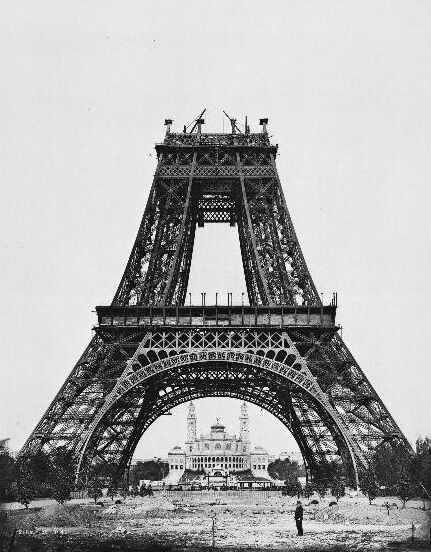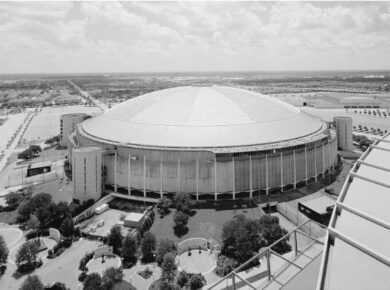The dedication of the Eiffel Tower on March 31, 1889.
In 1884, France’s young Third Republic, set up in the early 1870’s, choose to mark the centenary of the French Revolution of 1789. Not only would such an exhibition boost the economy, but it would also restore France’s status amongst the major powers. The centrepiece of the exhibition was to be a great monument.

Photo: Benh LIEU SONG
I refer to the post on Maurice Koechlin (14 January) on how Koechlin and Emile Nouguier came up with the first design of a tower. Conceived as an enormous metal pylon, it comprised four exposed latticework legs of iron, flared at the bottom and converging at the apex, which where tied together by further metal struts at regular intervals.

Photo: MarkGGN.
Nougier and Koechlin’s initial design was too technical for the Paris Exhibition, which demanded more sophisticated works of architecture. In order to make the project more acceptable to public opinion, the architect Stephane Sauvestre worked on the tower’s appearance. Presented with this modified version that could now be opened to visitors, Eiffel hastened to register a patent in the names of Nouguier, Koechlin and Eiffel.
The Tower was constructed at record speed. It took only six months to build the foundations and 21 months to erect the metal structure. A large proportion of the Tower’s components were manufactured in the Eiffel factory of Levallois-Perret.

Photo: Public Domain
All the individual parts were prefabricated: they were calculated, traced, cut out and punched with rivet holes to an accuracy of a tenth of a millimeter, pre-assembled into iron sections a few meter in length and then delivered to the Champ de Mars.
Eiffel’s tower was greeted with skepticism from critics who argued that it would be structurally unsound, and indignation from others who thought it would be an eyesore in the heart of Paris. Unperturbed, Eiffel completed his great tower under budget in just two years.





Photos: AwkwardGamer321 / Public Domain
Only one worker lost his life during construction, which at the time was a remarkably low casualty number for a project of that magnitude. The light, airy structure was by all accounts a technological wonder and within a few decades came to be regarded as an architectural masterpiece. Long live the Eiffel Tower!
About the Author:

Bruno Dursin – Managing Director at Believe in Steel. Bruno has more than 30 years of experience in promoting steel & steel solutions. His clients benefit from his extensive network within the building industry.



